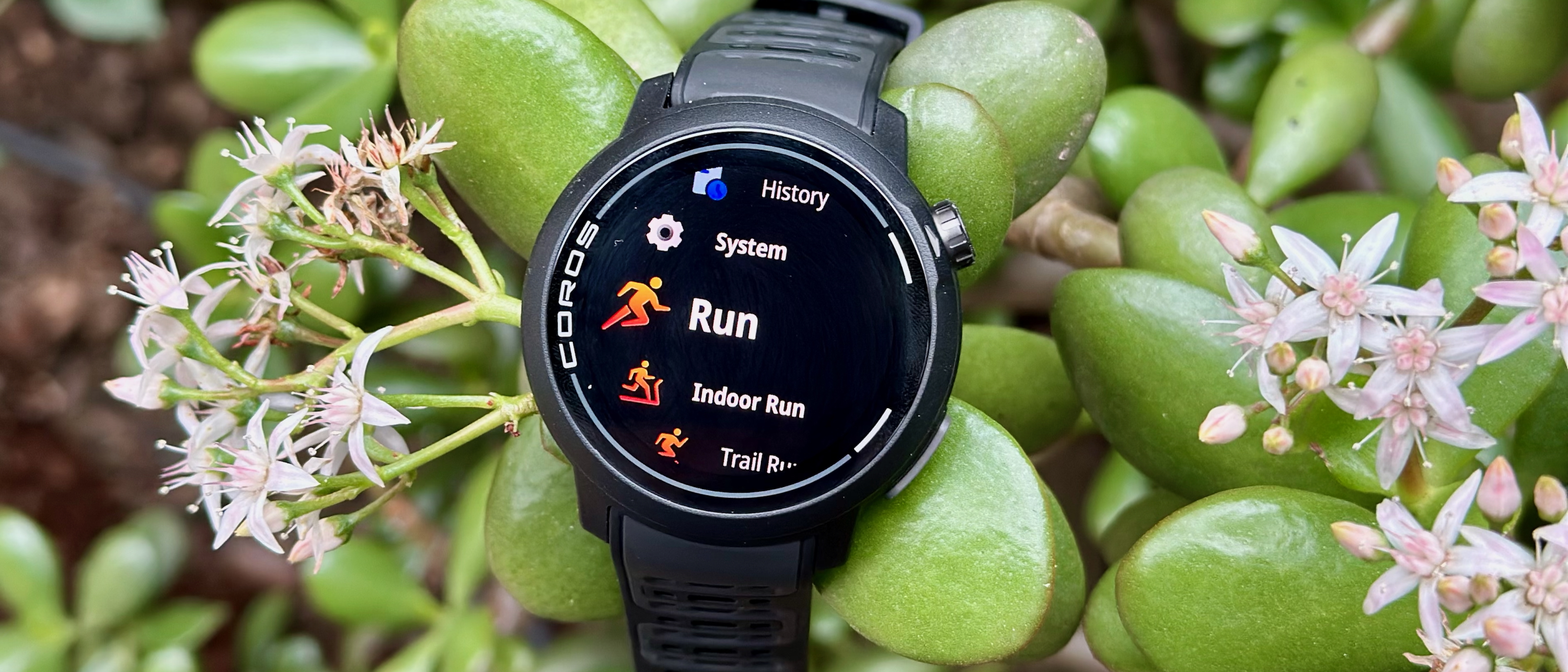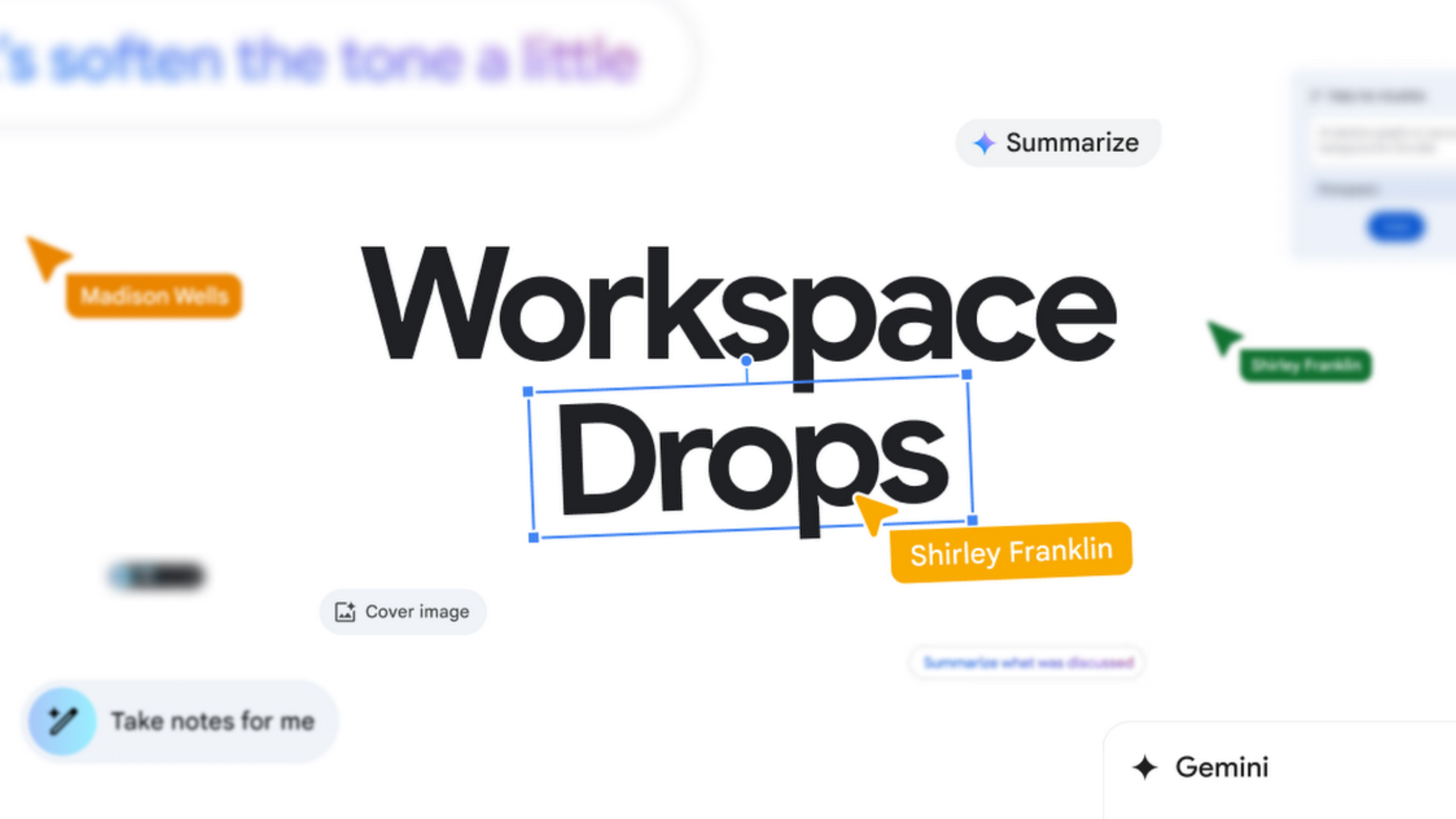Android Central Verdict
The COROS PACE Pro holds its own against comparable running watches from Garmin, Polar, and Suunto, though I wouldn't recommend couch-to-5Kers buy one until they're serious about daily training. Its software experience is comparable to past PACE and APEX models, but the AMOLED display and maps are welcome, long-overdue upgrades.
Pros
- +
Bright AMOLED upgrade is long overdue
- +
Excellent battery life, GPS accuracy
- +
Solid (if imperfect) HR accuracy
- +
New maps easy to use with crown
- +
EvoLab remains as useful to runners as ever
- +
Faster CPU/RAM promises years of updates
Cons
- -
Pedestrian polymer design
- -
Boring, static watch faces
- -
Could use UI overhaul for apps, notifications
Why you can trust Android Central
I was predisposed to like the COROS PACE Pro more than its older siblings for one simple reason: it's the brand's first AMOLED watch. As someone with steadily worsening eyesight, I've never liked using MIP displays except during sunny workouts where they shine, so to speak. Indoors, COROS watches weren't that fun to use.
The PACE Pro felt inevitable and overdue after rivals like Garmin, Suunto, and Polar adopted AMOLED en masse in 2023 and 2024. I loved the COROS PACE 3, calling it the best affordable watch of 2023, but only because MIP felt like a fair sacrifice for the price. The PACE Pro had a higher bar to clear, both for its $349 price tag and my expectations.
Since late October, I've taken the COROS PACE Pro on dozens of runs, hikes, and workouts, comparing it against other recent fitness watches like the Garmin Fenix 8 and Polar Vantage M3. I've come away impressed, or at least satisfied, with its accuracy and performance in key areas.
While it's taken me too long to get this review out, that's only a reflection of how jam-packed 2024 was with smartwatches to test, not its quality or importance. If you're on the hunt for a reliable running watch, I'd look seriously at the COROS PACE Pro.
COROS PACE Pro: Models and specs
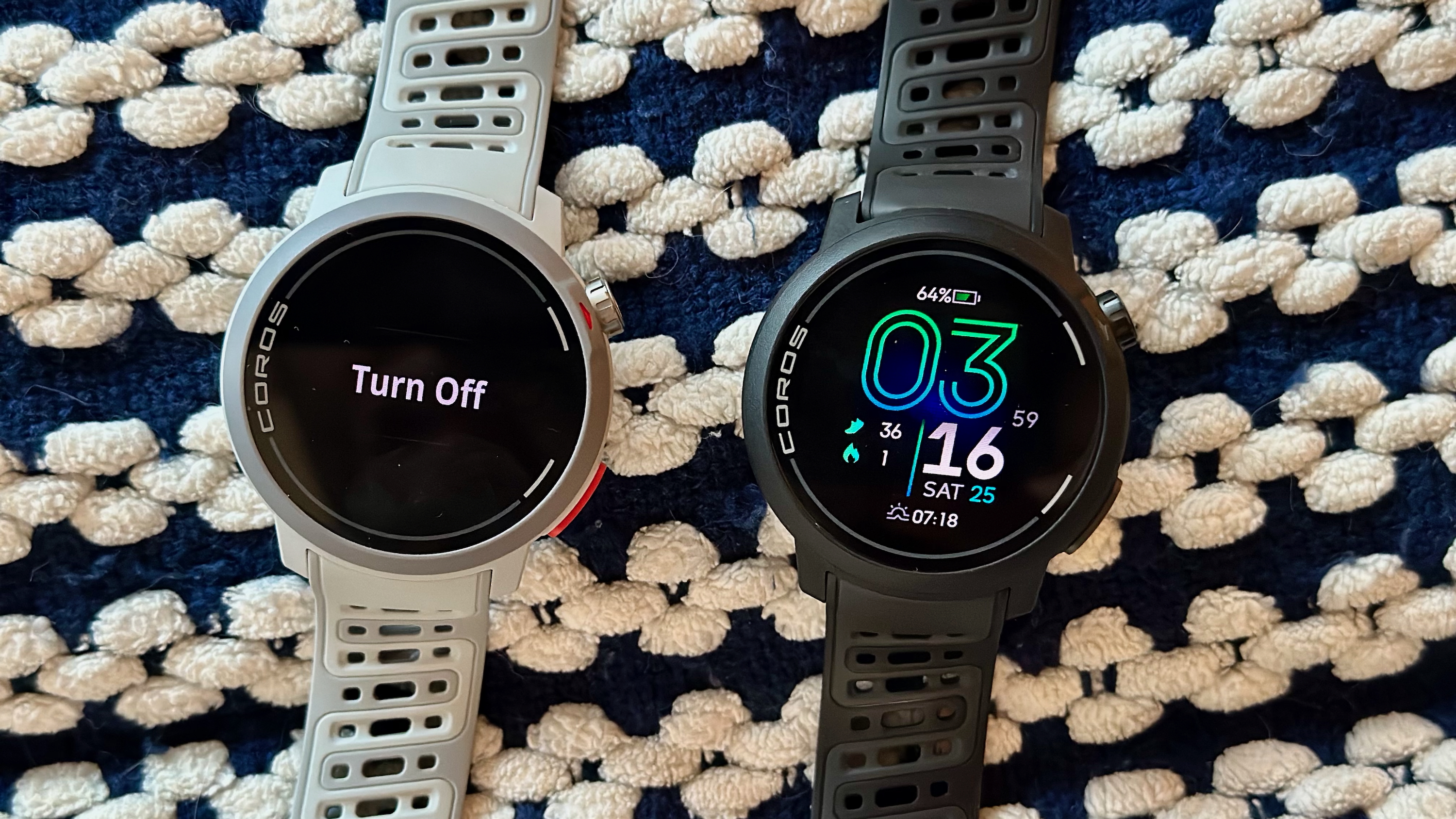
The COROS PACE Pro launched on October 31, 2024, for $349 / CA$499 / €399 / £349 / A$599. It currently ships in three colors — Black, Gray, and Blue — and only has one 46mm case / 1.3-inch display size. It defaults to a silicone strap that matches the case color, but you can buy a nylon strap for $29 that reduces the weight by 12g if you prefer.
The first "Pro" of the PACE lineup, it arrived about a year after the PACE 3 with some key upgrades. The most noticeable is the display boost from a 1.2-inch non-touch MIP to a 1.3-inch AMOLED touchscreen with an extra 120 pixels per inch and improved brightness.
Plus, you get an extra five days or 16 dual-band GPS hours of battery life, despite the switch to a more vivid screen.
You also receive 2X and 3X faster CPU and RAM, respectively, along with 3X faster wi-fi downloads and 32GB storage instead of 4GB (for maps and music). COROS adds new features to every watch that's capable of it; since the PACE Pro has the fastest processor yet, it's capable of performance-heavy features like mapping and should get years of post-launch updates.
| Category | COROS PACE Pro |
|---|---|
| Dimensions | 46 x 46 x 14.2mm, 37g (nylon) or 49g (silicone) |
| Materials | High-strength polymer case, reinforced mineral glass display, nylon/ silicone band |
| Protection | 5ATM, -20ºC to 50ºC |
| Display | 1.3-inch AMOLED (416x416, 1,500 nits) |
| Storage | 32GB |
| Battery | 345mAh: 20 days; 6 days (AOD) |
| GPS battery | 38 hours (All GNSS); 31 hours (dual frequency) |
| Charging | 100% in 1.5 hours |
| Sensors | Optical HR (5 LEDs + 4 photodiodes), altimeter, accelerometer, gyroscope, compass, SpO2, ECG |
| Buttons | Digital dial, back button |
| Connectivity | Bluetooth, WiFI |
| Activities | Run, Indoor Run, Trail Run, Track Run, Hiking, Walking, Bike, Gravel Bike, MTB Bike, Mountain E-bike, Indoor Bike, Open Water, Pool Swim, Rowing, Indoor Rowing, Flatwater, Strength, GPS Cardio, Gym Cardio, Jump Rope, Skiing, Snowboarding, XC Ski, Triathlon, Multi-Sport, Custom |
| Key features | EvoLab, Running Fitness Test, Recommended Training Load, Recovery Timer, Effort Pace, RHR test, Workouts, Training Plans, Altitude Performance, Daily Stress |
Note: COROS contacted me during my review that "a small number of watches from the first production have a minor defect risk when exposed to incredibly dry and cold conditions. These conditions caused some watches to overheat and be uncomfortable to wear. This issue was resolved before PACE Pro went on sale and there is no risk that consumer units will have this issue. Only early samples were impacted."
I myself never had this issue, but I finished my review with the Black PACE Pro after starting with the Gray PACE Pro, which is currently disabled. Neither model had any noticeable differences in terms of accuracy or performance.
COROS PACE Pro: What I love
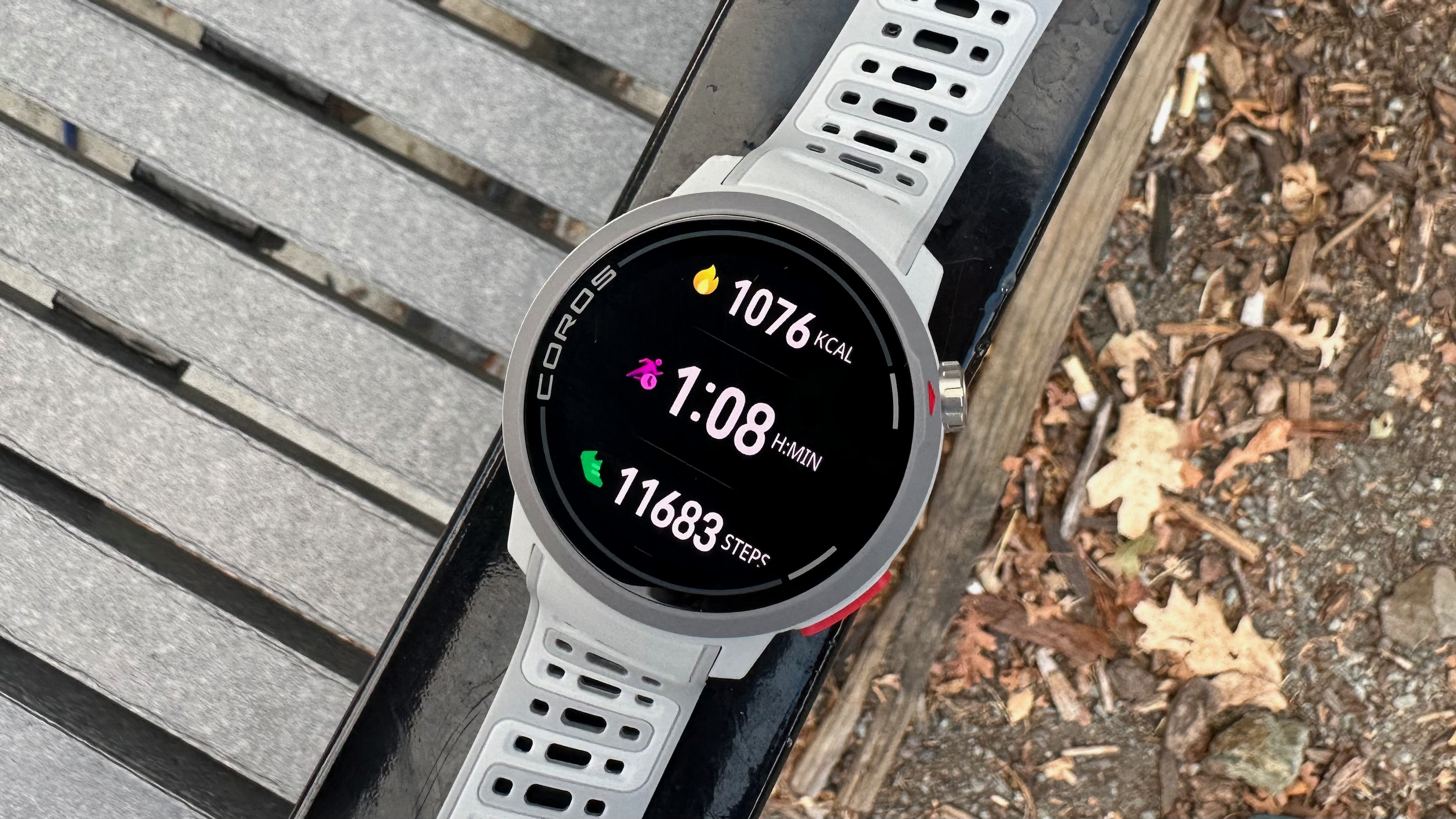
Reviewing COROS watches can feel a bit repetitive because each model builds upon the other. The features I liked in the 2021 PACE 2, 2022 APEX 2, and 2023 VERTIX 2S mostly apply to the PACE Pro, even though the VERTIX costs twice as much.
Generally speaking, COROS watches are lightweight, long-lived, and simple to navigate through the core widgets using the crown (or "digital dial"). COROS doesn't lock features to pricier or newer models, so everything the PACE Pro tracks is already available on the other watches (unless their processors are too old to support them).
Using the PACE 3 software won't feel any different to 2022 APEX 2 owners; it's mainly the display, materials, and GPS that have changed.
That's why testing the PACE Pro is extremely familiar. COROS' EvoLab training metrics have remained largely unchanged. You see after every run how hard you worked out, how much of your activity splits into different heart rate zones, how long to rest before your next run, and other core data that runners need to succeed. Aside from a couple of missing features I'd love added, it's fairly comprehensive and only improving over time.
With just a few crown twists, you'll find your daily activity stats, training load and training status, recovery estimates, sleep stats, barometer, and other data; a few other useful widgets like race predictions and intensity distributions in the submenus by pressing the dial.
The UI isn't great for anyone who cares about apps, messaging, or a virtual assistant, but it is perfectly specialized for athletes who don't use their watches much outside of sports and checking notifications.
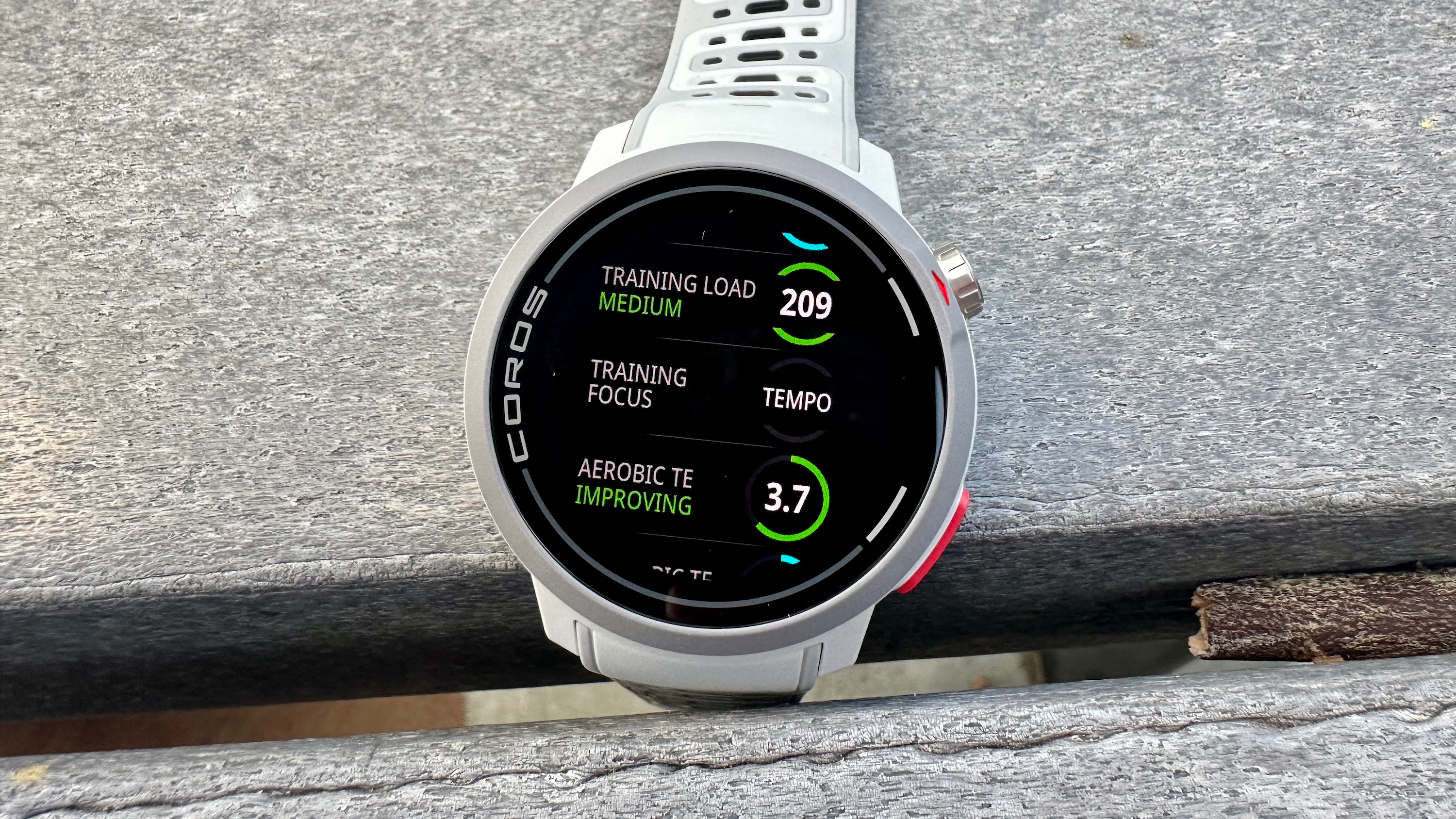
The software can lag behind rival fitness brands for key features, but COROS has been on an update tear recently to catch up (even if COROS itself wouldn't frame it that way). And it makes the PACE Pro a more well-rounded device for athletes.
Just in 2024, we've seen COROS add daily stress tracking, wellness checks, sleep stages & quality, and nap detection. I think some equivalent to Garmin Body Battery or Fitbit Daily Readiness is the next logical step to this collective data, though COROS only has a Recovery widget for now. The PACE Pro is much better at knowing the state of your body rather than guessing based on your fitness level and workout intensity.
COROS also added niche fitness tools that made the PACE Pro and its siblings better specialized for serious athletes: real-time group tracking, gear tracking, safety alerts to emergency contacts, virtual pacing, cycling power modes, Strava Live Segments, and turn-by-turn alert arrows. The latter two make the PACE Pro more useable if you care about route navigation or tend to re-run the same routes and want to pace yourself in real-time.
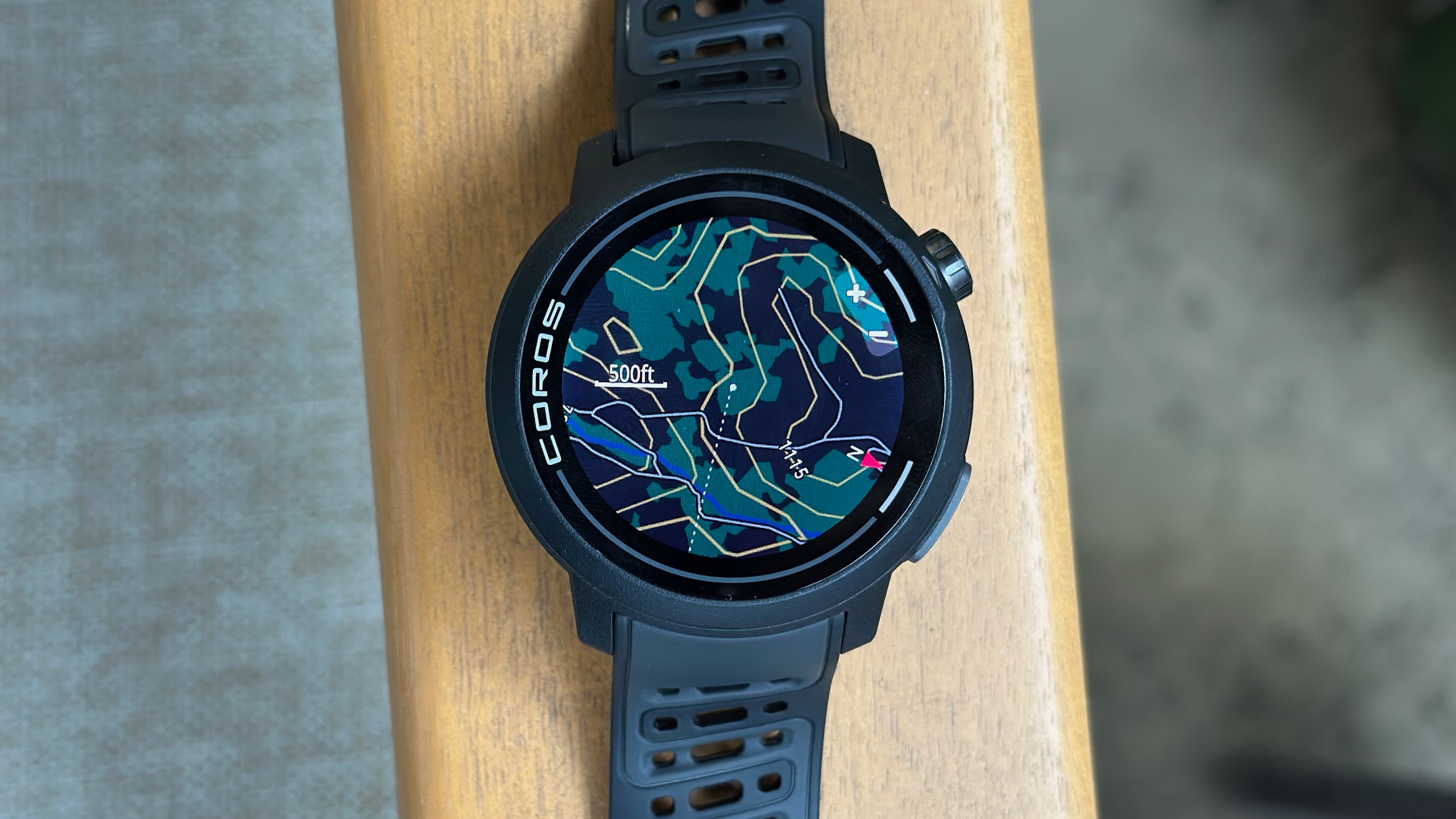
What's most important to me is that the PACE Pro has downloadable maps that provide background info to your routes, while the $449 Garmin Forerunner 265 only has breadcrumb navigation — topo maps are restricted to the Forerunner 965.
COROS splits its map into grids, so it only takes a couple of minutes to download a particular region if, for instance, you're vacationing somewhere new or flying to a destination marathon. Creating a route in the COROS app is as simple as plopping down Start and End waypoints; power users can import GPX files or use partnered apps like Strava or Komoot to make routes, as well.
I rarely use map routes on any smartwatch, but I enjoy following them on the PACE Pro over any other brand for one simple reason: the crown. On my Fenix 8, I have to press the Up/Down buttons to zoom in and out, and it feels laggy and laborious; on my PACE Pro, it's as simple as scrolling the dial, and the speedy CPU makes the zoom-in or out feel effortless and quick. I jump from an eagle-eyed view to a close perspective in moments.
Maybe the map can pan and zoom so quickly because it lacks any street/trail names or points of interest, so there's no context for what's around you. COROS told DCR that "trail/road labels are coming in Q1 2025" — another example of COROS' speedy update cadence paying off — and for now, that's the only negative to an otherwise positive map feature.
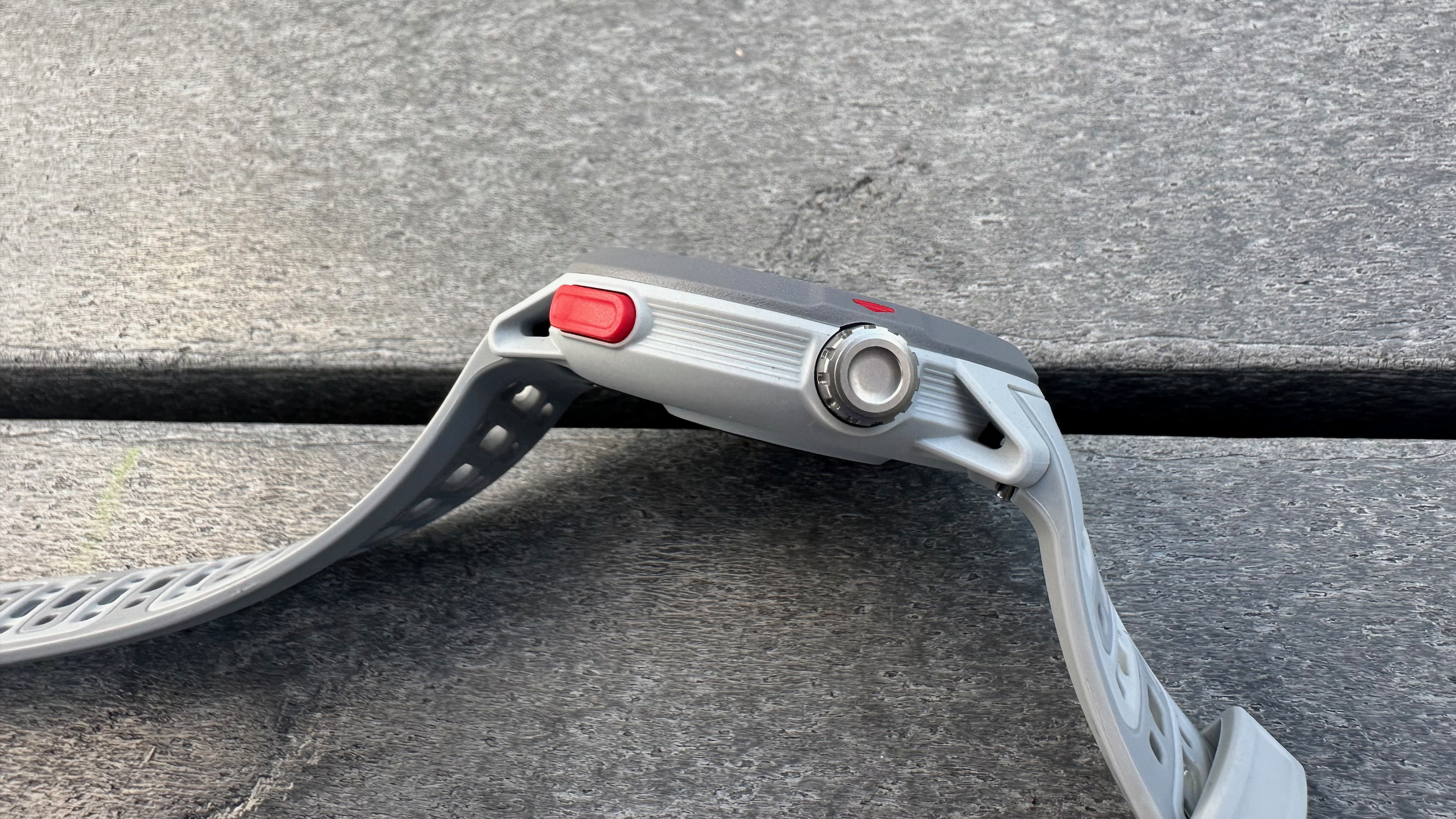
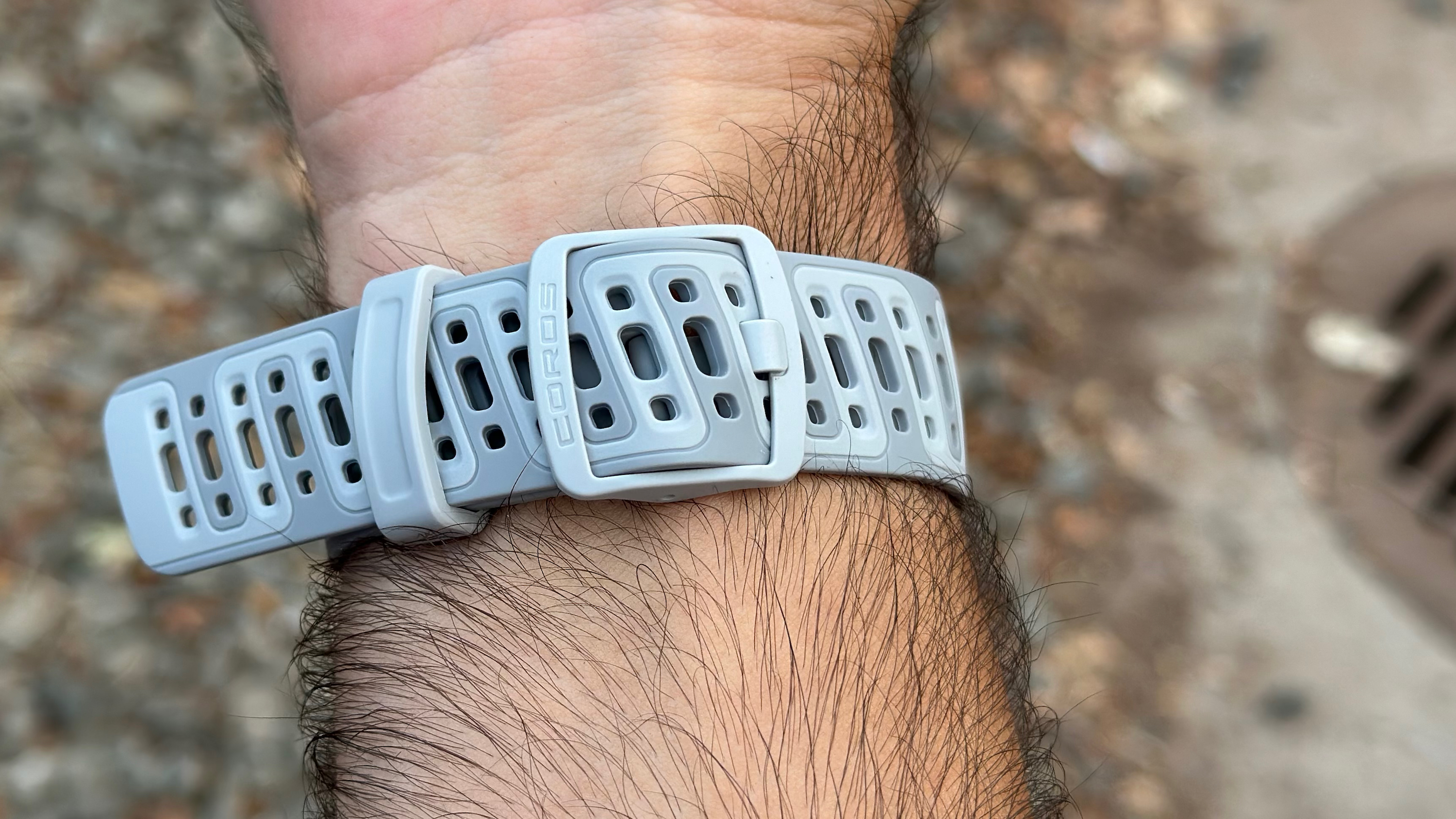
The core PACE Pro experience is lightweight and reasonably thin, uses only a fraction of its battery after an hour-long dual-frequency GPS run, and has a quick-release strap switch so you can buy and swap in any third-party option you prefer — though COROS' silicone and nylon replacements are very affordable at $29 apiece.
I like the default silicone band because of its breathable design and its two-slot buckle that keeps the watch securely in place, while other bands have some bounce during hard runs unless they're fastened tightly.
With AOD mode on, the PACE Pro is rated to last six days, though I never make it that long with daily workouts. Without AOD, it's rated to last 20 days; again, I found that estimate is a bit generous, but it still easily makes it a couple of weeks with sleep/stress tracking and regular GPS activities, which is a standard that'll keep 99% of runners happy enough.
COROS PACE Pro: GPS & Heart rate accuracy test
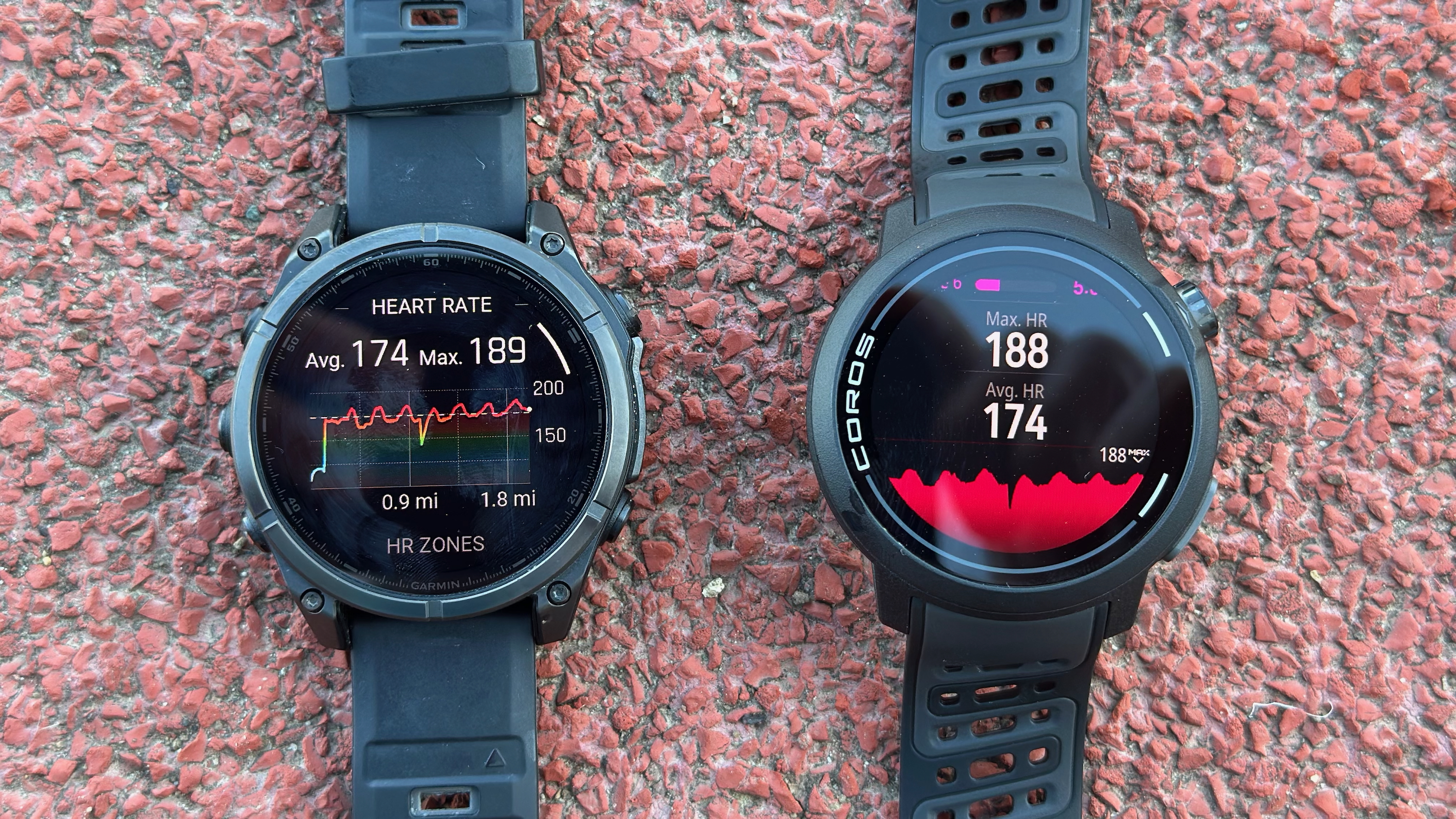
Back in November, I did an in-depth COROS PACE Pro fitness test against the Garmin Fenix 8 for dual-band GPS accuracy and the Polar H10 for heart rate accuracy, including several long runs, a hike, and a track workout. Rather than repost 1,500 words and a dozen graphs here, I'll briefly quote my findings.
For location accuracy, "COROS' redesigned antenna and new GPS chipset paid off" with a "definite improvement in GPS accuracy" compared to past dual-band COROS watches that put it on par with Garmin's $1,100 flagship.
For heart rate accuracy, I didn't see a noticeable difference between the PACE Pro and PACE 3 despite getting a redesigned optical sensor. It's "generally reliable for heart rate" and better than your average running watch, but it did fall distinctly short during an anaerobic workout and was slightly too high on average over a long hike. I recommended "buying the COROS armband... if you need the best possible results," but found it good enough for most runners.
Since then, I've used the COROS PACE Pro for several more multi-watch runs, including a 20-mile race wearing four watches, to test more comprehensively how accurate it is. Here's what I found:
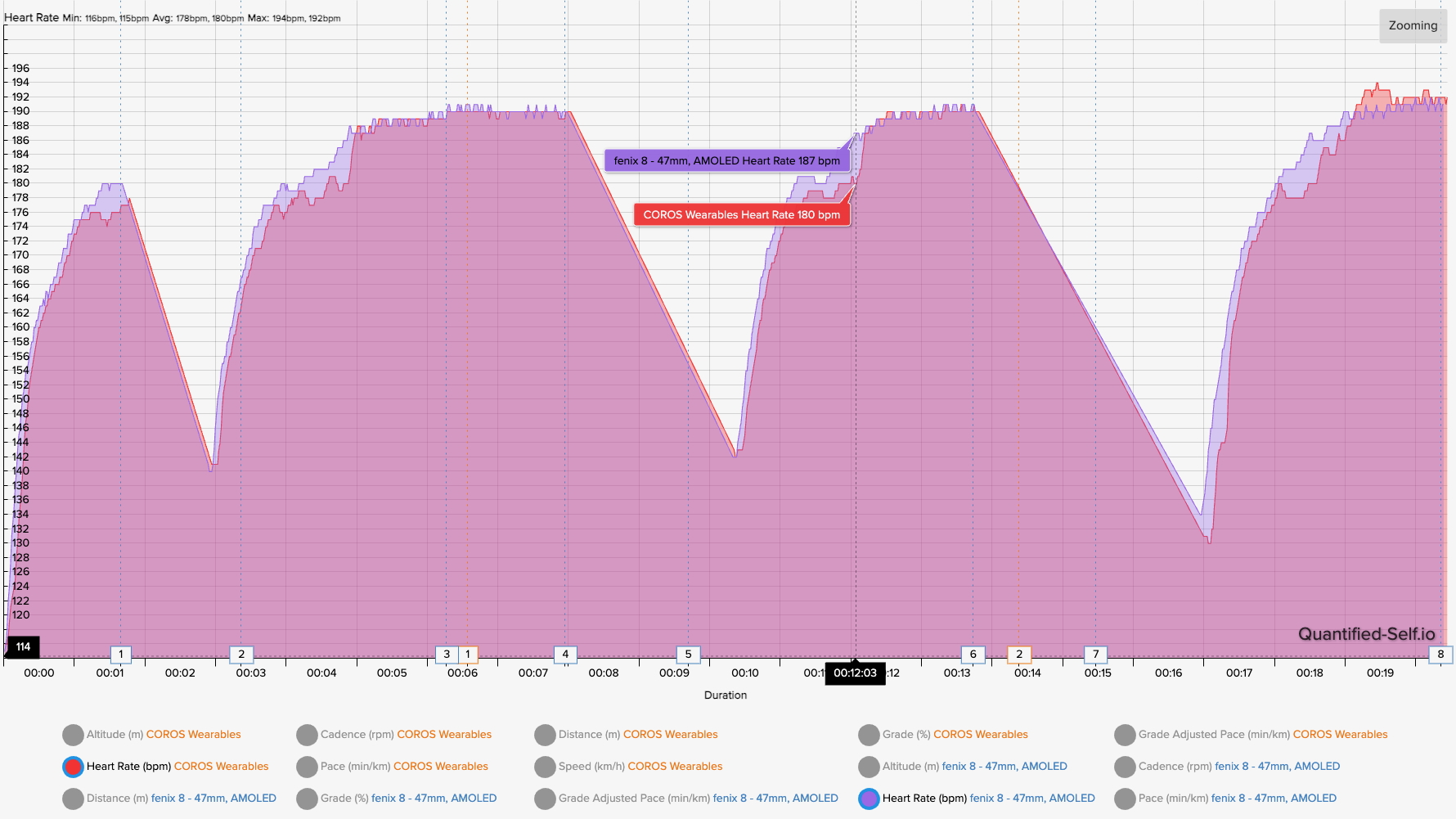
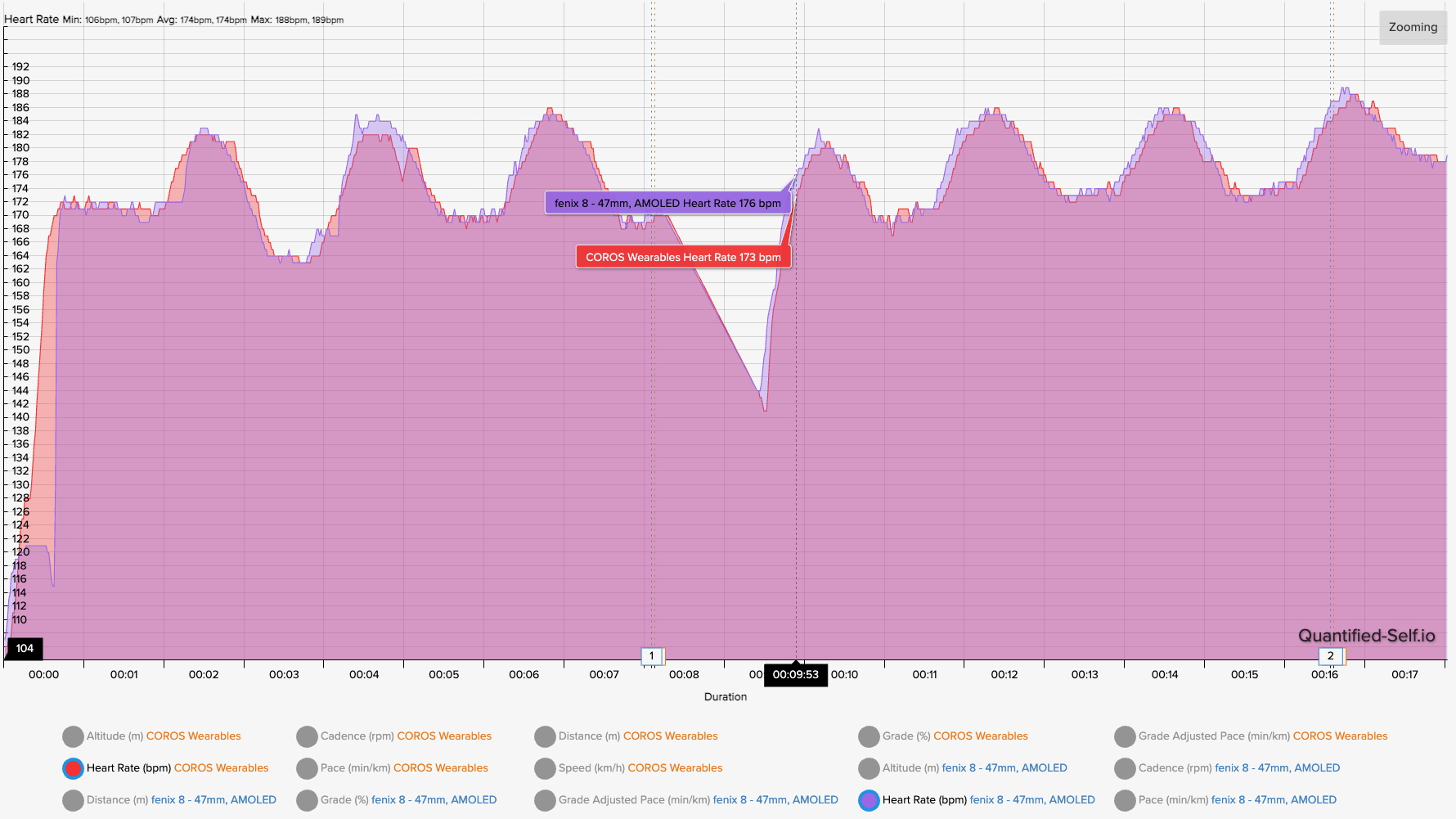
The two heart rate charts above show two more track workouts. The first is more of the same: the PACE Pro fell 2 bpm short of my chest strap's average because the watch couldn't keep up when my heart rate rose rapidly for 400m or 800m sets.
For my second workout, I did a sustained workout where I jogged in between hard 200m sets instead of pausing fully, and the results were much better. You can still see a distinct difference between the two, but the gap was smaller, and the rising and falling heart rates allowed the PACE Pro to balance out when it was too high or low. The HR average ended up being the same for both.

For a "normal" 13-mile run, the COROS PACE Pro did well enough, though there's always going to be a gap between a chest strap and an optical wrist-based monitor. Aside from a couple of heart rate spikes, the PACE Pro was generally a couple of beats behind the Polar H10, needing a little time to catch up.
It ultimately fell 1 bpm short of the H10's average. Still, an everyday runner will find the results more than good enough for accurate heart rate zones and training load.

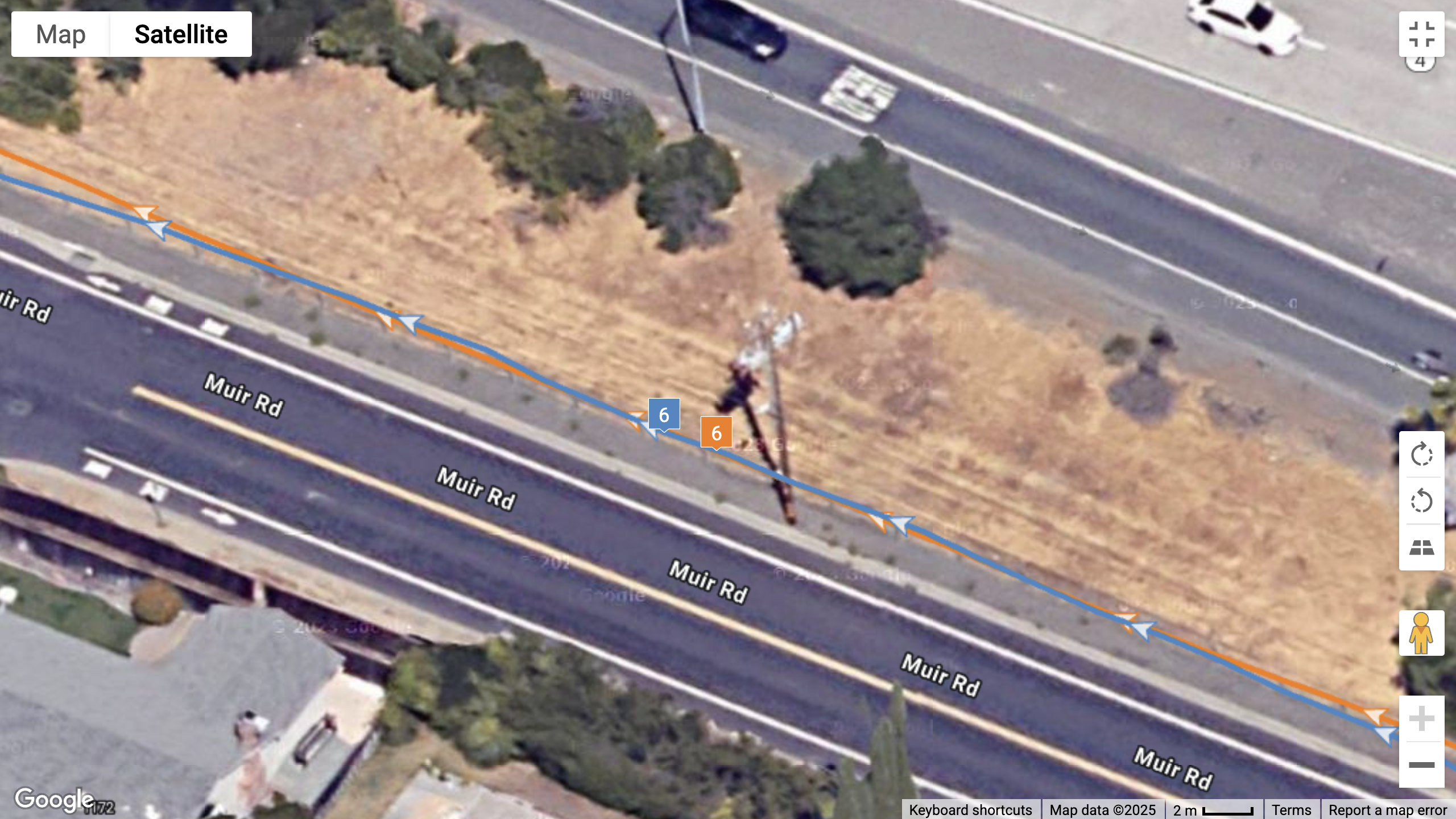
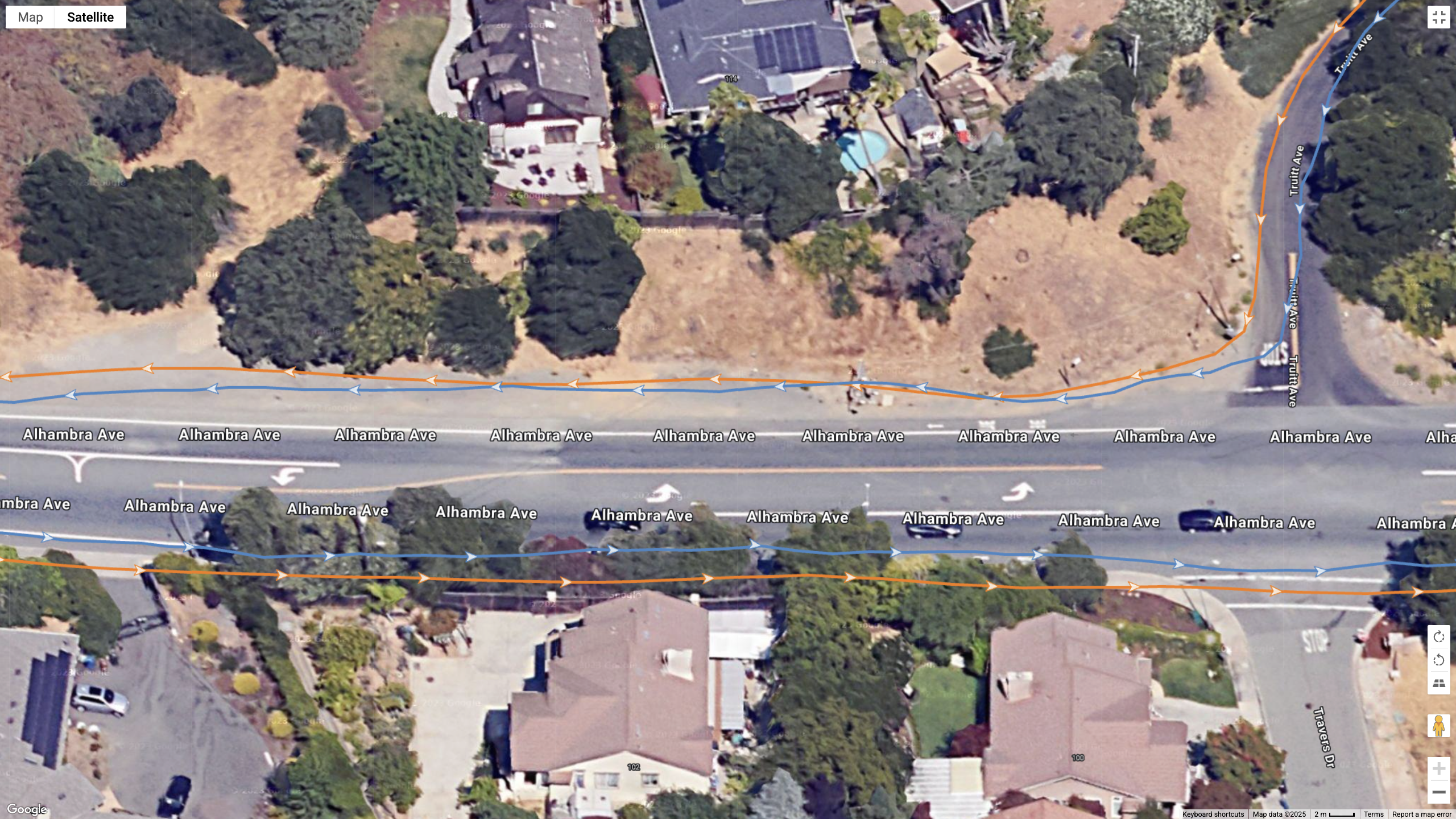
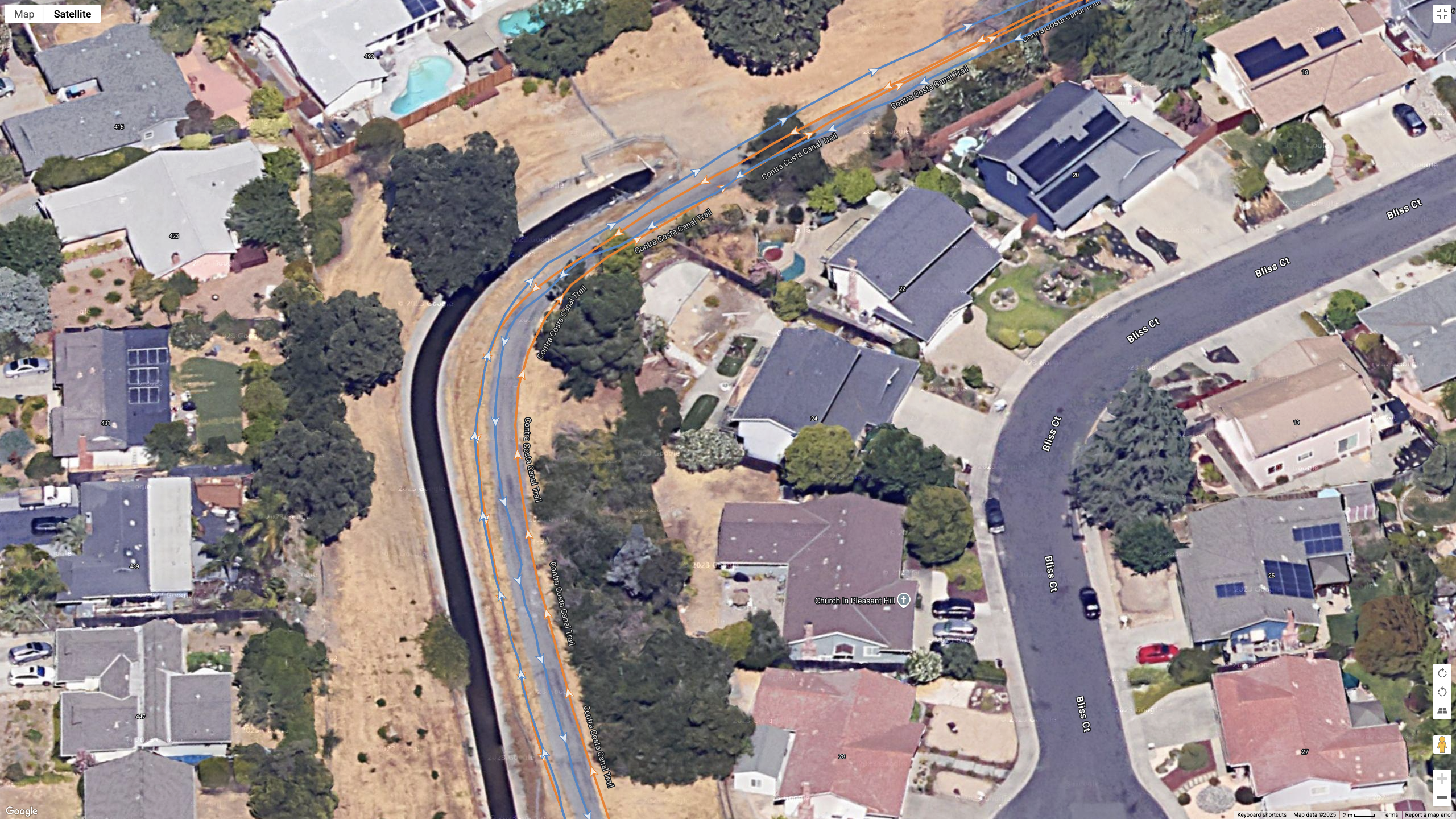
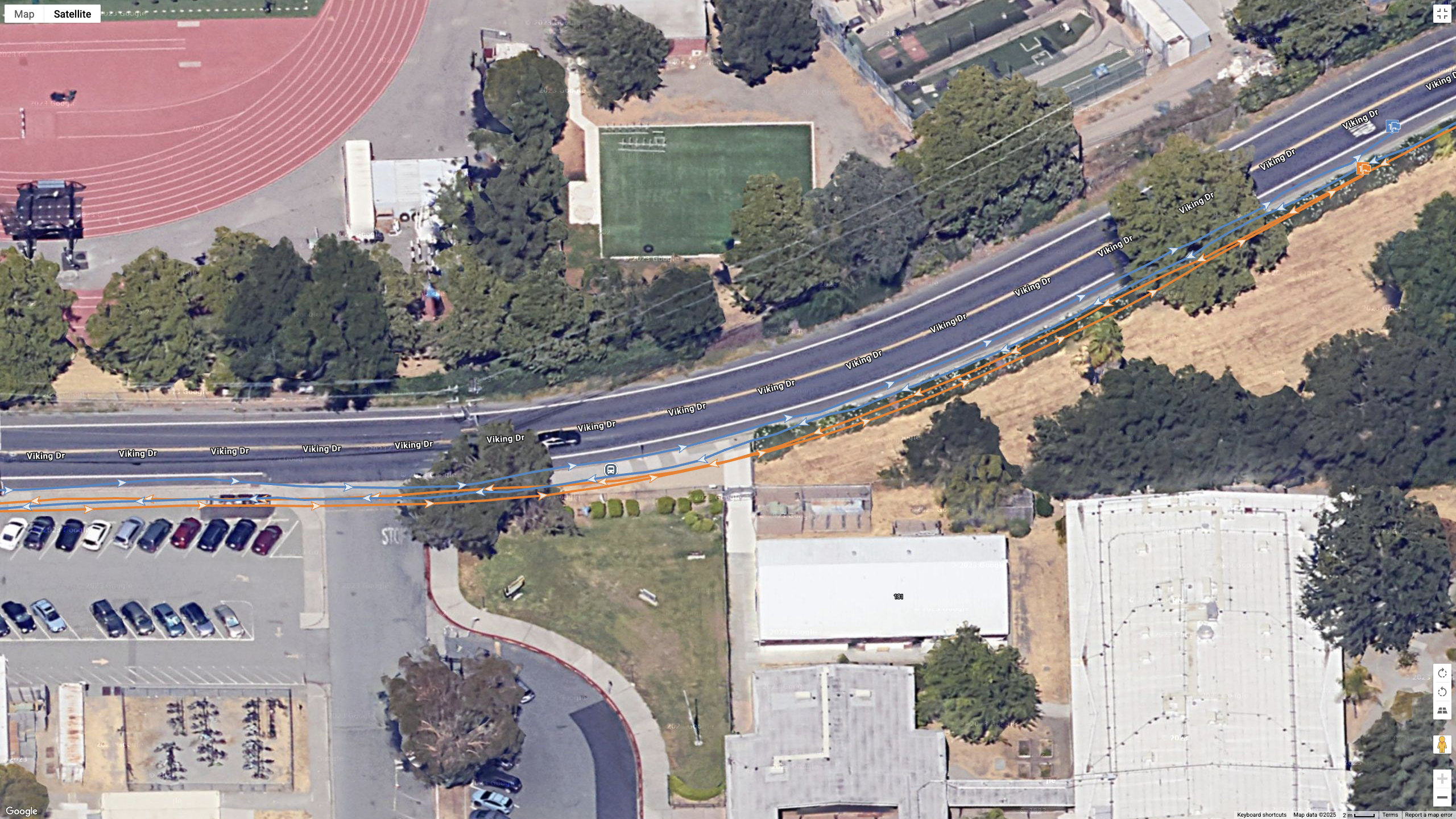

I'm including a few more GPS screenshots with the COROS PACE Pro (orange) and Garmin Fenix 8 (blue) from that same 13-mile run, which ended with Garmin and COROS measuring 13.20 and 13.17 miles, respectively. As you'd expect from such similar results, the GPS maps are boringly similar, if imperfect. (Click the box icon to zoom in.)
Basically, Garmin and COROS tend to be parallel to or overlap one another in most places, but do occasionally drift a bit into the street. COROS' past dual-band watches didn't seem to do as well, but the PACE Pro seems fully reliable at this point and frequently beats Garmin's $1,100 watch.
You can count on the PACE Pro for reliable GPS results, and that's arguably more important than HR accuracy: Serious athletes can buy an external HRM if you need perfect results — such as the COROS HRM armband, which syncs automatically with the PACE Pro — but they can't buy a satellite signal booster (as far as I know).
COROS PACE Pro: What I don't like
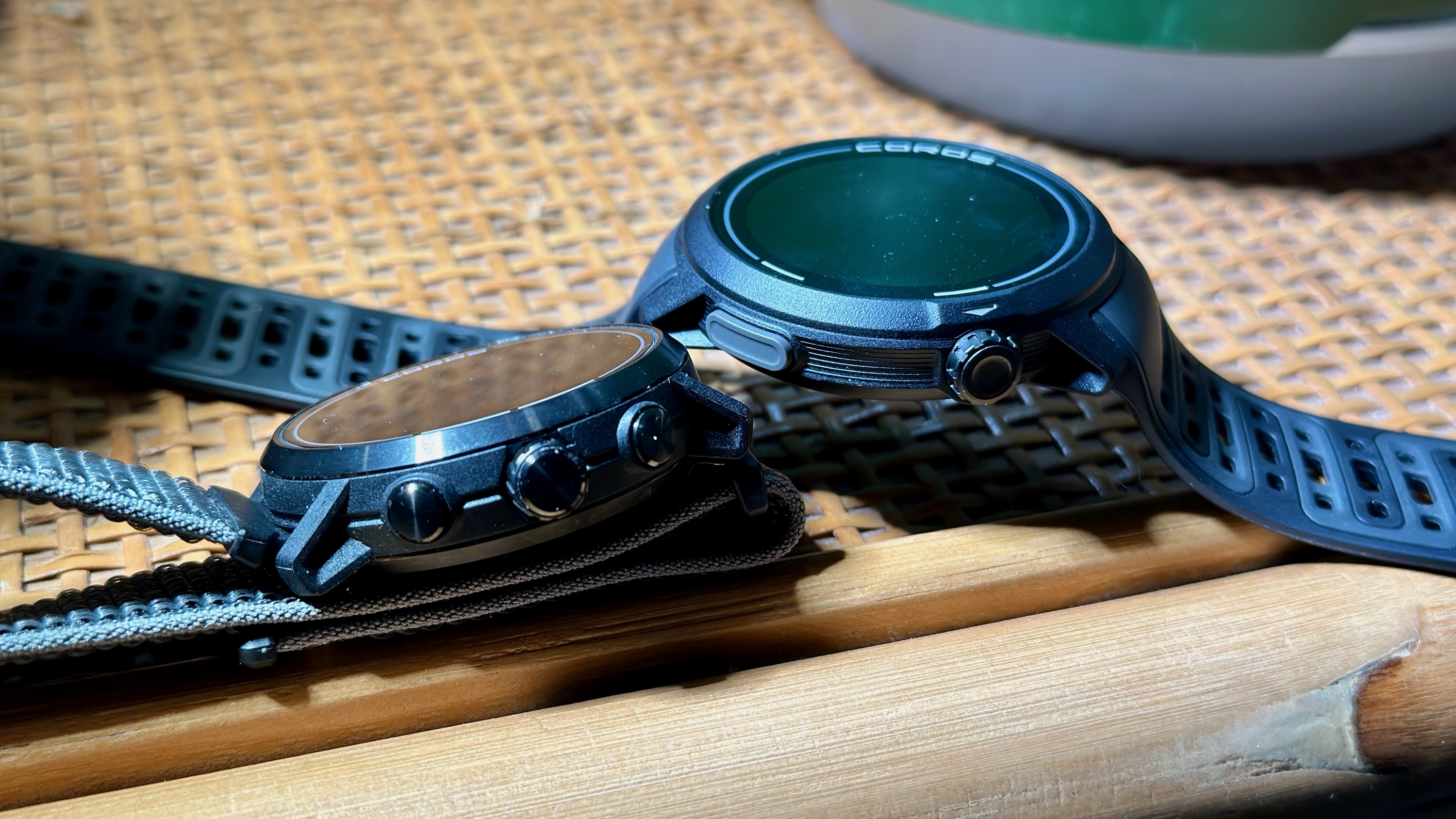
I'd personally choose a PACE Pro over a COROS APEX 2 because of the faster processor, dual-band GPS, 4x storage, and switch to AMOLED. However, some will appreciate the APEX's titanium case and sapphire glass, while the PACE Pro has a decidedly "sporty" appearance, which some might call cheap-looking. There's a reason why it did poorly in my recent smartwatch beauty pageant.
Whichever COROS watch you buy, you're not getting NFC for contactless payments. Rival fitness brands like Polar and Suunto share this issue; unlike Garmin, which spent millions to acquire FitPay in 2019, most smaller watch brands like COROS don't have access to NFC technology, which is a deal-breaker for some runners who want to leave their cards at home.
On a similar note, COROS doesn't have any major music partnerships, so if you care about music storage, you have to connect your watch to your computer and drag MP3 files into a folder. There are no playlists, and songs are organized by upload order. That makes the feature useless for those who don't have hard copies of their music and annoying for anyone who'd prefer customizability instead of one library of songs.
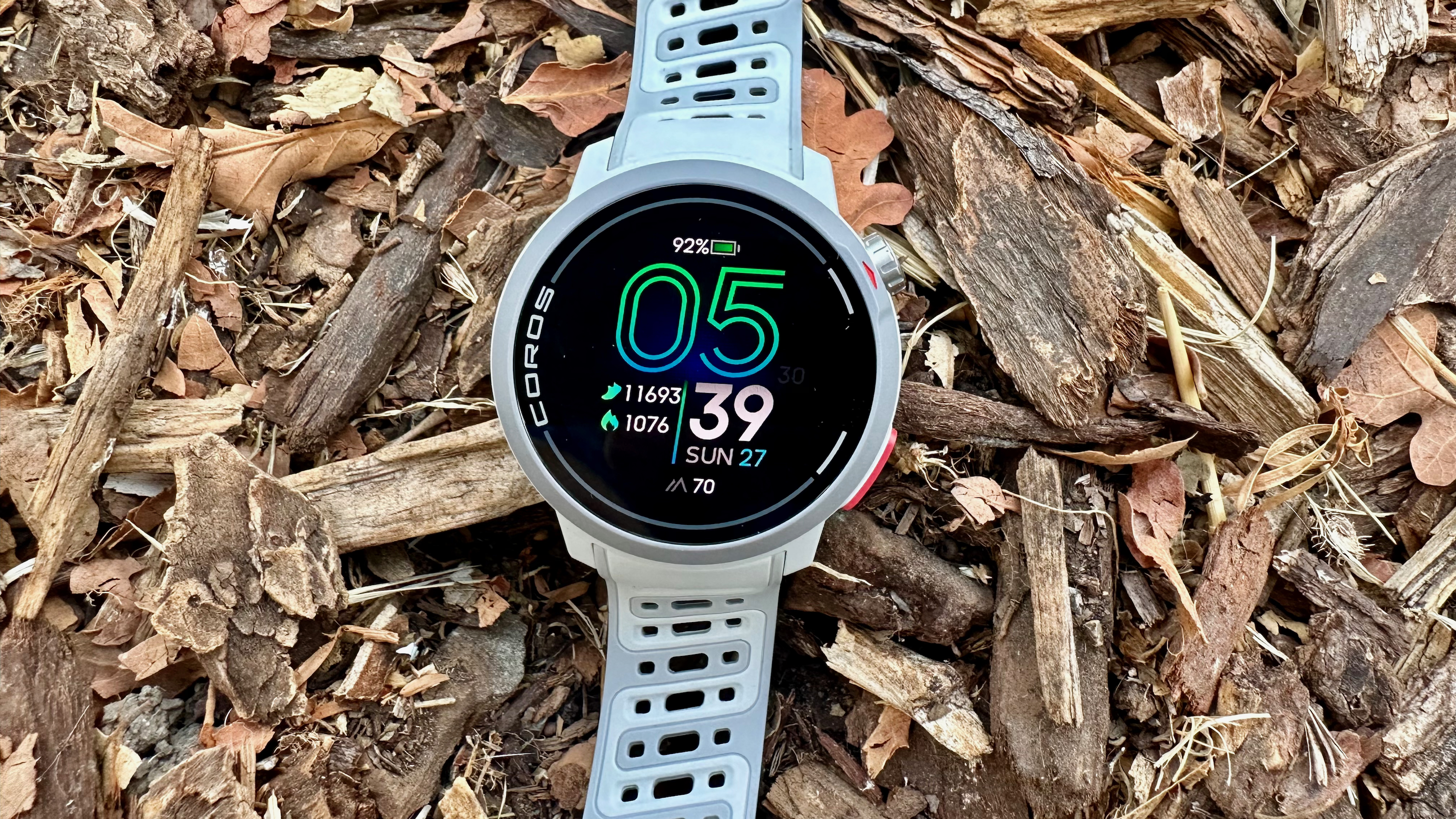
Having spent so much time testing Wear OS and Apple Watches in 2024, I do find the COROS UI fairly regressive. Having most of your apps, health sensors, and settings hidden behind a Back Button-long press, then having to scroll through your options one-by-one instead of swiping through an app drawer, is a pain.
Instead of being able to check notifications with a swipe from your home screen, you have to scroll through your widgets, select "Notifications," and then scroll through the lot. I've also found that emojis and photos don't seem to show up; COROS isn't taking full advantage of its AMOLED upgrade, in this case.
COROS watches have missing or barebones features; some will be essential deal-breakers; others, you may not even notice.
The watch face selection is adequate, if not as widespread as you get with most other smartwatches. Aesthetics aside, my main problem is with the lack of complications: you can't customize the data you see on the watch faces; only tap the back button on the home screen to swap between a few pre-chosen metrics like heart rate, sunrise/sunset, and elevation. If I want to see my current training load, recovery time, or other stats without having to scroll through menus, I should be able to! And I should be able to tap & hold those complications to jump to the relevant graph.
Beyond these main frustrations, I'd love to see an equivalent to Garmin's daily suggested workouts rather than having to depend fully on long-term plans in the Training Hub. Pointing out whether I need more easy/medium/hard activity and how much training load I need (without overtraining) seems like something COROS could do. The same goes for audio prompts that tell you your mile time or announce your next workout interval through the speaker or your earbuds without having to look at your screen.
COROS PACE Pro: Competition

The main COROS PACE Pro rivals are the $449 Garmin Forerunner 265, $399 Polar Vantage M3, and $349 Suunto Race S. They're all mid-range, multisport smartwatches with AMOLED displays, training load and recovery guidance, dual-band GPS, and at least a week of battery life per charge. Both Polar and Suunto have downloadable maps, too.
I'm accustomed to Garmin Forerunner watches, with access to Garmin Pay, Body Battery, daily suggested workouts, morning reports, audio prompts, ANT+ accessories, and a better selection of customizable watch faces. The PACE Pro has a significantly longer battery life than the Forerunner 265, plus ECG readings and downloadable maps instead of merely breadcrumb navigation. Both have 1.3-inch displays, but you can buy the 1.1-inch Forerunner 265S if you prefer a lighter experience. Whether you prefer a crown or Up/Down buttons for navigation during activities is subjective.
The Polar Vantage M3 will be my next review after the PACE Pro, but it had solid GPS accuracy and middling heart rate accuracy in my initial testing. I can't think of any obvious software advantages either COROS or Polar have over one another, but the PACE Pro has far superior battery life and display brightness, while the Vantage M3 has skin temperature readings, a display flashlight, and a wider array of useful performance and recovery tests.
Having only reviewed the Suunto Race, I can't say personally how well the Race S would compare, except that it's the only other option with a crown if that's a main COROS perk for you, plus a classier stainless steel bezel. Its battery life is only a week per charge, and it has no music storage capabilities, but it has unique Suunto Apps that you can download onto the watch that add unique smarts.
COROS PACE Pro: Should you buy it?
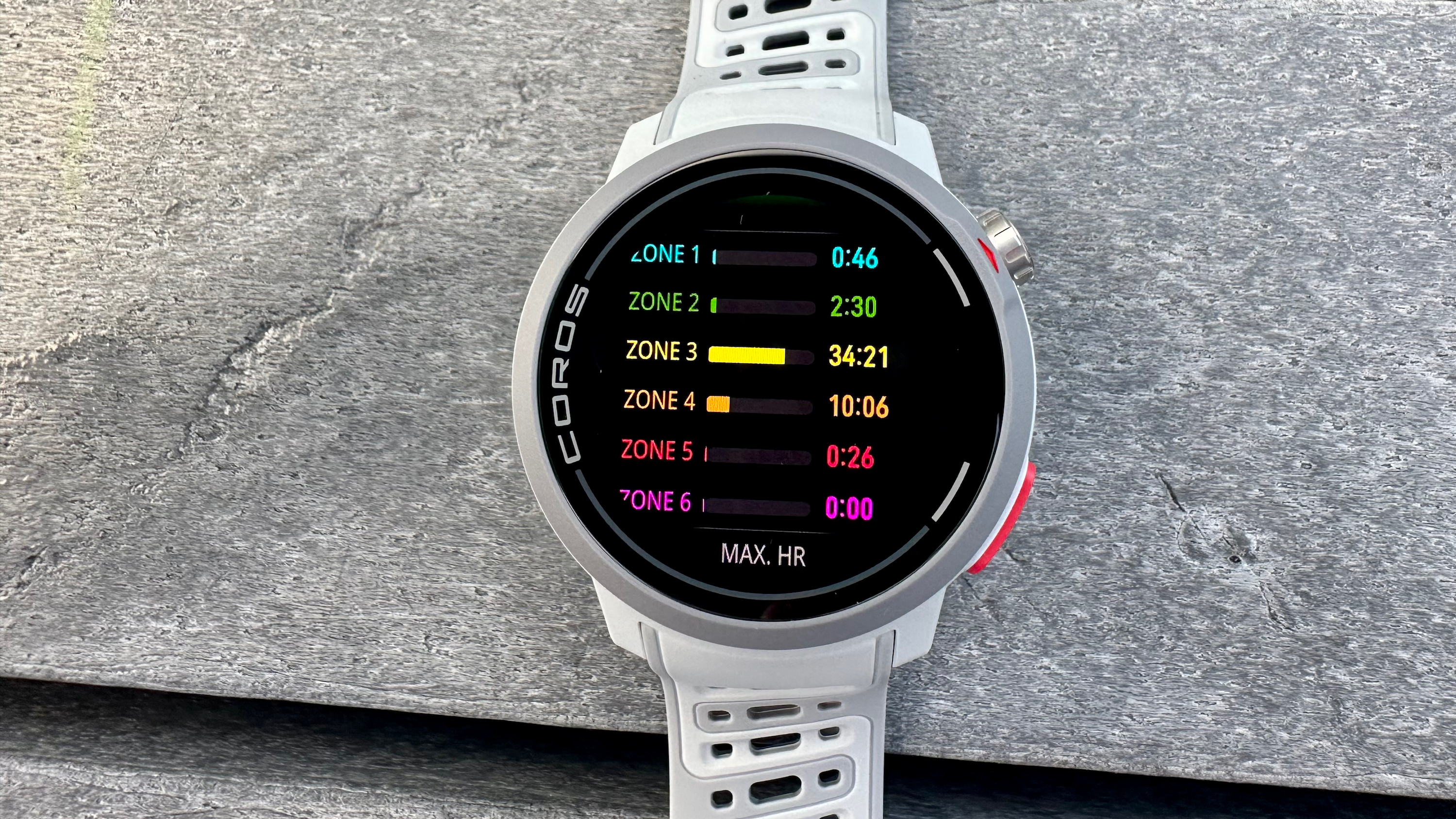
You should buy the COROS PACE Pro if...
- You're a COROS user who's been waiting for an AMOLED display.
- You're a serious runner looking for epic battery life and useful training guidance to hit PRs.
- You want a watch with reliable GPS and heart rate accuracy.
You shouldn't buy the COROS PACE Pro if...
- You care as much about style or ruggedness as training features.
- You need a specific, missing feature like contactless payments or Spotify playlists.
- You're not a fan of crowns for navigation.
I never like giving scores to my reviews because it simplifies a complicated conversation. I'm giving the PACE Pro a lower score than the PACE 3 — or the same score as the APEX 2 — even though I'd wear the Pro over either watch without a second thought.
Even if it's an unfair comparison, the PACE Pro costs more than a Galaxy Watch 7, and so I have to weigh its shortcomings in areas like smarts and design on a stricter scale. And as I've reviewed a wider array of watches, it's made it clearer in hindsight how past COROS watches fell short in key health and fitness areas until they closed the gap last year. I'm stricter than I was in the past when I wasn't experienced enough to see what was missing.
What matters most is that the COROS PACE Pro is an excellent running watch, without a doubt. It delivers accurate GPS & HR results, as well as useful insights into my training load and recovery, with similar findings to other reliable brands. And you're no longer stuck with a dull, low-res MIP display in between workouts.
While the PACE Pro has its shortcomings, I'm genuinely excited to see how feature updates throughout 2025 will fix some of them. Otherwise, I'm hoping we'll see an APEX 3 soon that delivers the same accuracy and display boost paired with a more stylish titanium design.
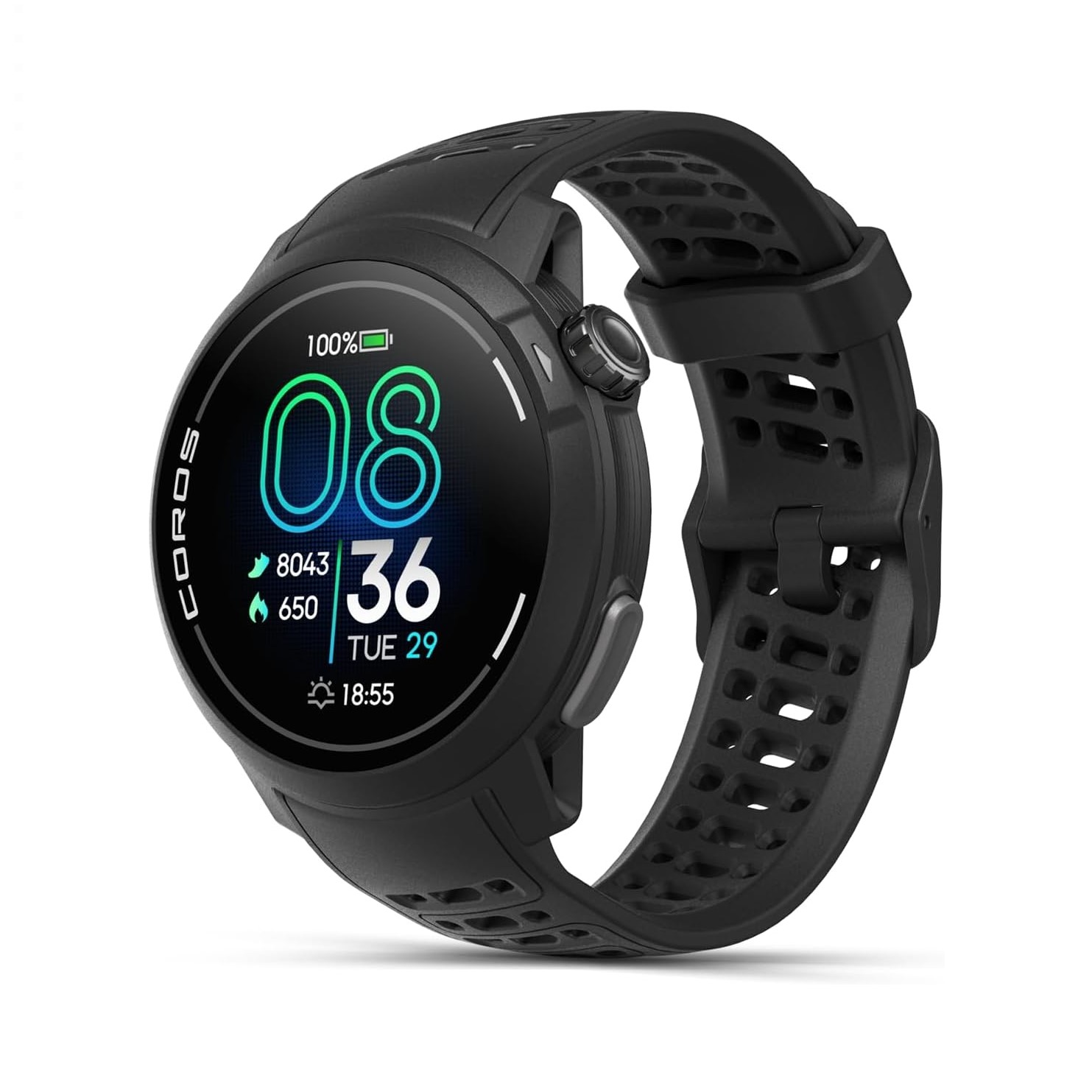
Tailor-made for runners
The COROS PACE Pro has a 1.3-inch AMOLED display, 20-day battery life, thin and decently lightweight design, and a faster processor capable of handling offline maps and routes with ease. Paired with the COROS EvoLab suite of training tools, the PACE Pro will guide you towards getting healthier and faster.

Michael is Android Central's resident expert on wearables and fitness. Before joining Android Central, he freelanced for years at Techradar, Wareable, Windows Central, and Digital Trends. Channeling his love of running, he established himself as an expert on fitness watches, testing and reviewing models from Garmin, Fitbit, Samsung, Apple, COROS, Polar, Amazfit, Suunto, and more.
You must confirm your public display name before commenting
Please logout and then login again, you will then be prompted to enter your display name.
